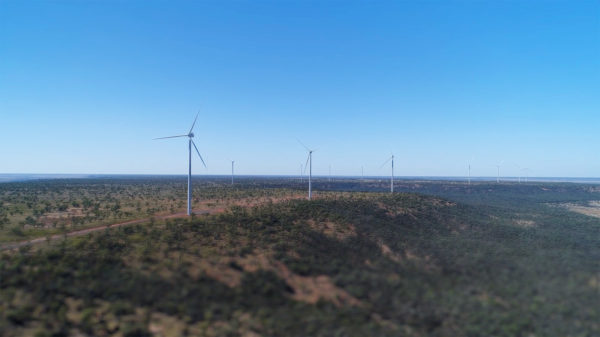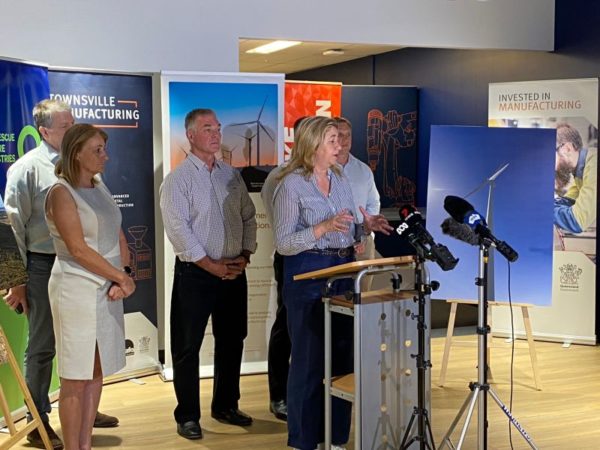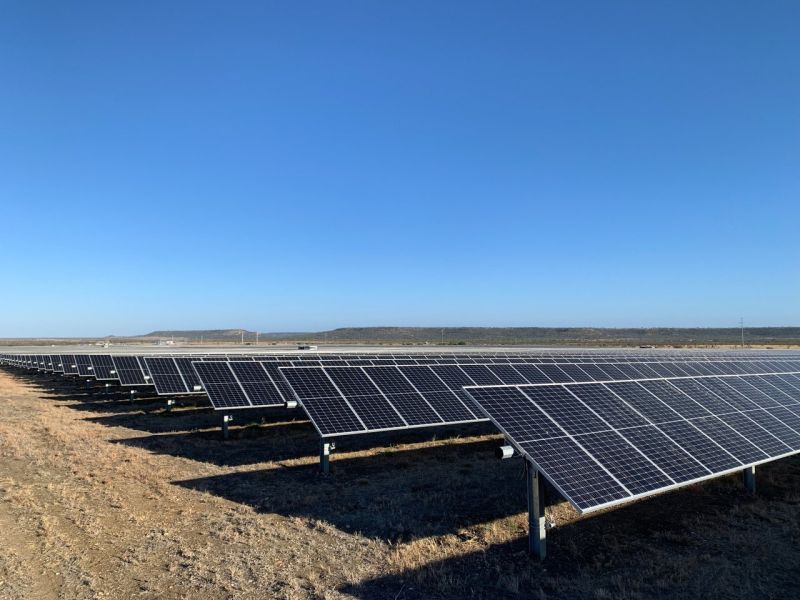Northwest Queensland is set to become home to one of the state’s largest renewable energy projects with Fortescue Future Industries (FFI) teaming with Windlab to develop the North Queensland Super Hub . The goal is to unlock more than 10 GW of wind and solar energy within the next 10 years and support large-scale green hydrogen production.
Canberra-based Windlab, which is partly owned by FFI Founder Andrew Forrest’s Squadron Energy, said the Super Hub, to be developed on pastoral land around Hughenden, 380 kilometres southwest of Townsville, will comprise a number of individual utility-scale projects.
The first projects announced for the Super Hub include the 800 MW Prairie Wind Farm and the 1 GW Wongalee wind project. When complete, the entire hub is expected to have a staggering 10 GW of clean energy capacity.
Windlab said the first stage of the proposed project is currently in detailed planning, with land agreements in place and the application for development approval for the Prairie Wind Farm planned for submission in the coming months.
Subject to approvals, construction on the first stage projects is expected to commence in 2025 with the projects anticipated to begin producing power by 2027.
FFI, which has repeatedly declared its intent to build a global portfolio of renewable projects to produce 15 million tons per year of green hydrogen by 2030, rising to 50 million tons per year in the decade thereafter, said energy generated from the Super Hub will be used to produce green hydrogen as well as feed renewable power to the grid.

Image: Windlab
FFI CEO Mark Hutchinson said the opportunity was a “game-changer” for Queensland that will accelerate decarbonisation of the grid and help make green hydrogen a reality at an industrial scale.
“Australia’s natural resources, including its wind, sun and landmass, are unrivalled in terms of their potential for the production of green energy – green hydrogen in particular – and that is no truer than in the sunshine state,” he said, before adding that both Queensland and Australia have the potential to play a leading role in the production and supply of green hydrogen globally.
Green hydrogen has been highlighted as a solution for decarbonisation across a range of sectors, including, transport, industrial and energy storage. The Australian Renewable Energy Agency (ARENA) forecast that demand for hydrogen exported from Australia could be over three million tonnes per year by 2040, injecting up to $10 billion (USD 6.7 billion) into the economy annually.
However, industrial-scale green hydrogen has so far been constrained by the lack of renewable supply to power the process of extracting hydrogen from water through electrification.
“For the first time, the North Queensland Super Hub will provide the quantity of renewable energy we need to support large-scale green hydrogen production right here in Queensland,” Hutchinson said. “The environmental and economic opportunities that can stem from this are significant, both in terms of lowering emissions and reducing reliance on fossil fuels, and in terms of local job creation.”
John Martin, chief executive of Windlab, which is behind the much-delayed Kennedy Energy Park project near Hughenden, said the North Queensland Super Hub presents a high-yield, complementary wind and solar resource in a region ideally suited for multiple offtake opportunities.
“This facility marks a big step towards realising our strategic, scalable development plan that leverages the region’s untapped renewable energy base to transform Australia’s electricity market and drive the nation’s clean energy transition,” he said.

Image: Supplied
Queensland Premier Annastacia Palaszczuk welcomed the plans for the Super Hub, saying it would accelerate the development of Northern Queensland Renewable Energy Zone (REZ) and sit at the heart of the state’s SuperGrid.
“Building the SuperGrid is a key part of the Queensland Energy and Jobs Plan, which we released in September this year,” she said. “The plan represents $62 billion of public and private investment in the energy system by 2035.”
According to Palaszczuk, the Super Hub will create 100,000 jobs by 2040 and further push Queensland toward its goal of reaching 70% renewable energy by 2032.
The Prairie Wind Farm alone is expected to support up to 240 jobs during construction, and 10 to 15 permanent, full-time jobs during operation. Construction is expected to commence on the first stage by 2025, with the projects operational by 2027.
The announcement of the North Queensland Super Hub comes on the back of FFI’s investment to establish a 2 GW renewable energy infrastructure-manufacturing plant near Gladstone in central Queensland and a separate 50,000 tonne green hydrogen production facility at Gibson Island in the state’s southeast.
FFI’s announcement comes after Queensland-based Ark Energy, a subsidiary of Korea Zinc, the world’s largest producer of zinc, announced its Collinsville Green Energy Hub. That proposal is for a 3 GW renewable energy hub that would develop a supply chain to export more than one million tonnes of green ammonia from north Queensland to Korea by 2032.
This content is protected by copyright and may not be reused. If you want to cooperate with us and would like to reuse some of our content, please contact: editors@pv-magazine.com.









4 comments
By submitting this form you agree to pv magazine using your data for the purposes of publishing your comment.
Your personal data will only be disclosed or otherwise transmitted to third parties for the purposes of spam filtering or if this is necessary for technical maintenance of the website. Any other transfer to third parties will not take place unless this is justified on the basis of applicable data protection regulations or if pv magazine is legally obliged to do so.
You may revoke this consent at any time with effect for the future, in which case your personal data will be deleted immediately. Otherwise, your data will be deleted if pv magazine has processed your request or the purpose of data storage is fulfilled.
Further information on data privacy can be found in our Data Protection Policy.